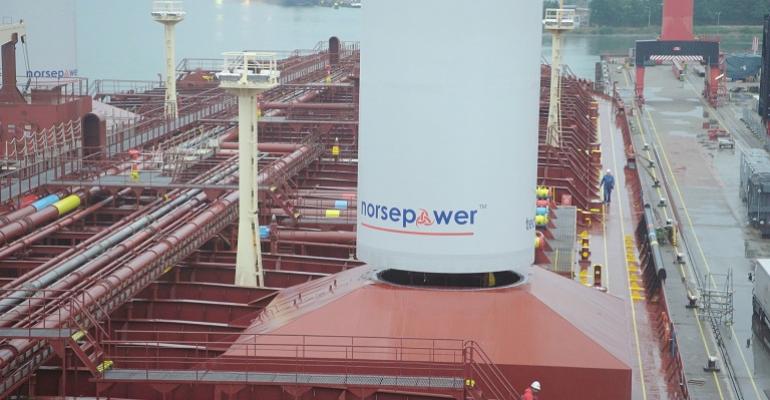This was a key conclusion of experts at a Blue Communications’ webinar earlier this week moderated by Blue Communications’ Managing Director, Alisdair Pettigrew. Panelists included Blue client, Tuomas Riski of Norsepower, Aude Leblanc, Burean Veritas’ Technology Leader, Sustainable Shipping, Gavin Allwright, International Windship Association Secretary, and Kris Fumberger, head of Sustainability and Environment at RightShip.
Allwright explained how wind-assisted propulsion is already an attractive option, with a number of fast-developing technologies raising the case for investment. However, he said, the IMO’s carbon-reducing measures relating to existing ships – EEXI and CII – will make wind investment significantly more attractive for existing ships.
Many owners are considering cutting ship speed as a means of reducing carbon output, he said. In so doing, they raise substantially the contribution that wind can make to propulsive power because, at any one time, it is a constant. Therefore, wind propulsion becomes a more appealing investment, he said, with a faster payback. Meanwhile, ‘wind routeing’ offers significant potential to optimise voyages.
Norsepower’s Riski gave the example of SC Connector, a 12,251gt ro-ro vessel operating in the North Sea, to which the world’s first tiltable Rotor Sails of height 35 metres were fitted this year. The benefit, which the company calculates on the basis of a long-term average, has been estimated at 25%. In fact, in certain conditions, the wind can propel the vessel at speeds of up to 20 knots, Riski said, compared with a 14-knot average for its main engines.
Increasingly stringent ESG strategies among charterers, regulatory pressure, likely carbon pricing, and inevitably more expensive fuels will increase the return on investment and cut the payback time, he added.
Copyright © 2024. All rights reserved. Seatrade, a trading name of Informa Markets (UK) Limited.
Add Seatrade Maritime News to your Google News feed.  |

